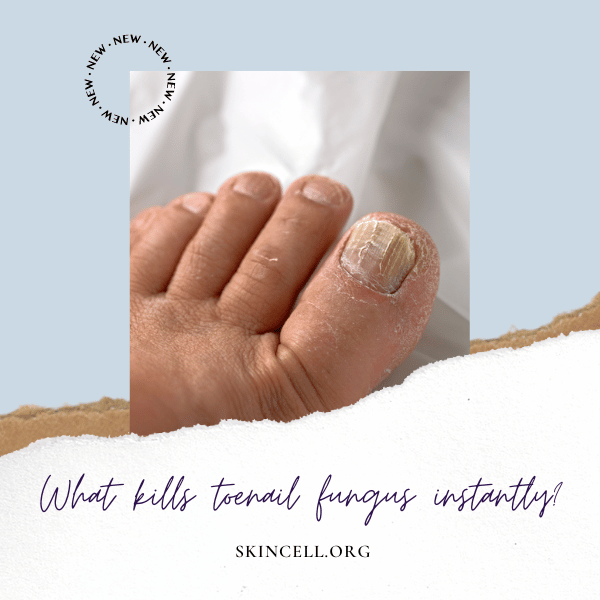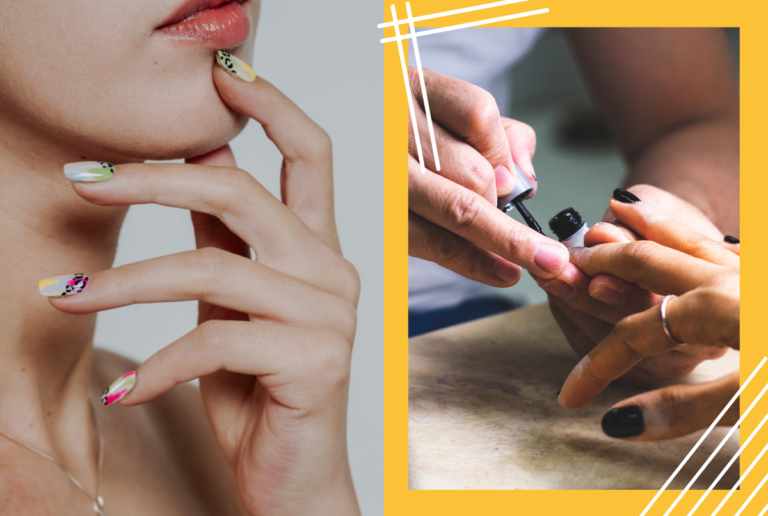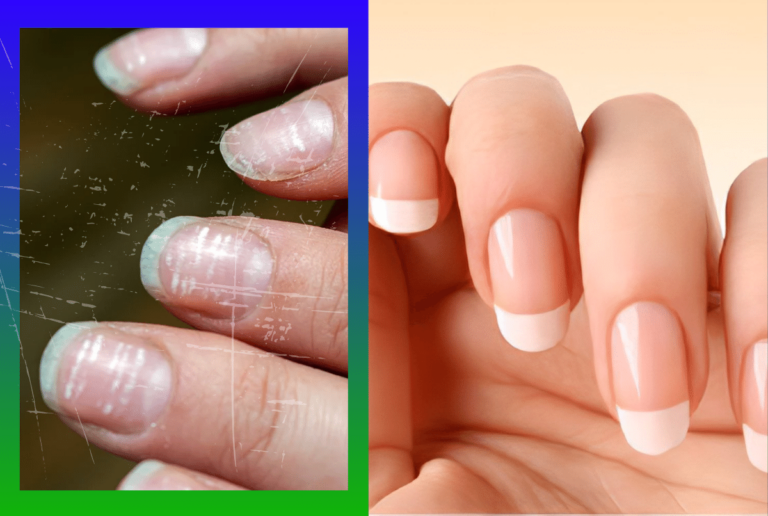What Kills Toenail Fungus Instantly?
Wondering how to tackle that stubborn toenail fungus?
You’re in good company, as this is a challenge many face. Toenail fungus, a widespread issue, can lead to unsightly and sometimes painful symptoms, but the quest for an instant cure often leads to a plethora of suggested remedies.
From traditional medical interventions to home-based solutions, the options are vast, yet immediate results are elusive.
Well, we’ll be going over:
- Can certain treatments offer rapid relief from toenail fungus symptoms?
- What role do natural remedies and over-the-counter products play in managing this condition?
- How important is ongoing foot care in preventing toenail fungus recurrence?
Let’s dive in.

Key Takeaways
- Toenail fungus is a common infection that can be caused by various types of fungi.
- Medical treatments, home remedies, and over-the-counter solutions are available to help combat toenail fungus.
- While there are no instant cures for toenail fungus, some treatments can provide quick relief, such as thymol, eucalyptus oil, and oregano oil.
Understanding Toenail Fungus
Toenail fungus, also known as onychomycosis, is a common fungal infection that affects the nail bed and the plate under the surface of the toenail. The condition is caused by bacteria, yeast, or fungal spores that enter the nail bed through small cracks or cuts in the skin around the toenail.
Causes and Symptoms
Toenail fungus can be caused by a variety of factors, including poor circulation, weakened immune system, and exposure to moist environments such as swimming pools, locker rooms, and showers. The condition is more common in older adults and people with diabetes or other medical conditions that affect blood flow to the feet.
Symptoms of toenail fungus include yellow, brown, or white discoloration of the toenail, thickening of the nail, and separation of the nail from the nail bed. In severe cases, the nail may become brittle and crumble, causing pain and discomfort.
Diagnosis and Stages
To diagnose toenail fungus, your doctor may perform a physical exam and take a sample of the affected nail for laboratory testing. The condition is typically classified into four stages based on the severity of the infection:
- Stage 1: Mild infection with no visible symptoms
- Stage 2: Yellow or white discoloration of the nail
- Stage 3: Thickening of the nail and separation from the nail bed
- Stage 4: Severe infection with significant nail damage and pain
If left untreated, toenail fungus can spread to other toenails and even to other parts of the body. It is important to seek treatment as soon as possible to prevent the infection from becoming worse.
In the next section, we will discuss various treatment options available to get rid of toenail fungus and prevent it from recurring.
Medical Treatments
If you have toenail fungus, there are several medical treatments your doctor may recommend. In this section, we will discuss prescription medications, topical treatments, oral antifungal treatments, and advanced procedures.
Prescription Medications
Prescription medications are antifungal drugs that are stronger than over-the-counter options. They can be taken orally or applied topically to the affected area. Some of the most commonly prescribed medications for toenail fungus include terbinafine (Lamisil), itraconazole (Sporanox), and fluconazole (Diflucan). These medications work by killing the fungus or preventing it from growing.
However, prescription medications can have side effects, including liver damage. Your doctor may recommend blood tests to monitor your liver function while taking these medications.
Topical Treatments
Topical treatments are applied directly to the affected area and are available over-the-counter or by prescription. Some of the most commonly prescribed topical treatments for toenail fungus include ciclopirox (Penlac) and efinaconazole (Jublia). These medications work by preventing the fungus from growing.
While topical treatments are less likely to cause side effects than oral medications, they may take longer to work.
Oral Antifungal Treatments
Oral antifungal treatments are taken by mouth and work by killing the fungus. Some of the most commonly prescribed oral antifungal treatments for toenail fungus include terbinafine (Lamisil) and itraconazole (Sporanox). These medications may be more effective than topical treatments, but they can have side effects, including liver damage.
Advanced Procedures
If other treatments haven’t worked, your doctor may recommend advanced procedures, such as laser therapy or surgery. Laser therapy uses a laser to kill the fungus, while surgery involves removing the affected nail.
While these procedures may be effective, they can be expensive and may not be covered by insurance.
In conclusion, there are several medical treatments available for toenail fungus. Your doctor can help you determine which treatment is right for you based on the severity of your infection, your medical history, and other factors.
Home Remedies and Over-the-Counter Solutions
If you are looking for a way to kill toenail fungus instantly, there are several home remedies and over-the-counter solutions that you can try. These remedies and solutions are generally safe, effective, and easy to use. In this section, we will discuss some of the most popular and effective options.
Natural Oils and Extracts
One of the most popular home remedies for toenail fungus is tea tree oil. This oil has antifungal properties that can help kill the fungus and prevent it from spreading. To use tea tree oil, simply apply a few drops to the affected nail and surrounding skin two to three times a day.
Another natural remedy that has been shown to be effective is snakeroot extract. This extract is derived from a plant called Ageratina pichinchensis and has been used for centuries to treat fungal infections. To use snakeroot extract, apply a few drops to the affected nail and surrounding skin twice a day.
Eucalyptus oil is another natural remedy that has antifungal properties. To use eucalyptus oil, mix a few drops with a carrier oil, such as coconut oil or olive oil, and apply to the affected nail and surrounding skin twice a day.
Household Items and DIY Solutions
There are also several household items and DIY solutions that can help kill toenail fungus. One of the most popular is garlic. Garlic has antifungal properties that can help kill the fungus and prevent it from spreading. To use garlic, crush a few cloves and apply the paste to the affected nail and surrounding skin twice a day.
White vinegar is another popular home remedy for toenail fungus. To use white vinegar, mix equal parts vinegar and water and soak your feet in the solution for 30 minutes a day. You can also apply the solution directly to the affected nail and surrounding skin twice a day.
Baking soda is another household item that can help kill toenail fungus. To use baking soda, mix it with water to form a paste and apply it to the affected nail and surrounding skin twice a day.
Over-the-Counter Options
If home remedies and DIY solutions are not effective, there are several over-the-counter options that you can try. One of the most popular is Tolnaftate. This antifungal medication is available in creams, powders, and sprays and can be applied directly to the affected nail and surrounding skin twice a day.
Undecylenic acid and Amorolfine are other antifungal medications that are available over-the-counter. These medications work by preventing the fungus from growing and spreading. They are available in creams, gels, and solutions and can be applied directly to the affected nail and surrounding skin twice a day.
Fungi-Nail and Vicks Vaporub are two other over-the-counter options that have been shown to be effective in treating toenail fungus. Fungi-Nail is an antifungal solution that can be applied directly to the affected nail and surrounding skin twice a day. Vicks Vaporub is a topical ointment that contains camphor, menthol, and eucalyptus oil and can be applied to the affected nail and surrounding skin twice a day.
In conclusion, there are several home remedies and over-the-counter solutions that can help kill toenail fungus instantly. These remedies and solutions are generally safe, effective, and easy to use. If you are suffering from toenail fungus, give one of these options a try and see if it works for you.
Preventing Toenail Fungus Recurrence
Toenail fungus can be a stubborn infection to treat, and recurrence is common. However, there are steps you can take to prevent it from coming back. In this section, we will discuss foot care and hygiene, as well as lifestyle adjustments that can help prevent toenail fungus recurrence.
Foot Care and Hygiene
Proper foot care and hygiene are essential for preventing toenail fungus recurrence. Here are some tips to keep your feet healthy and fungus-free:
- Keep your feet clean and dry. Wash your feet daily with soap and water, and dry them thoroughly, especially between the toes.
- Trim your toenails regularly and properly. Cut them straight across and avoid rounding the corners, which can lead to ingrown toenails.
- Wear clean socks made of breathable materials, such as cotton or wool. Change your socks daily or more often if your feet sweat excessively.
- Wear shoes that fit well and allow your feet to breathe. Avoid tight, narrow, or pointed shoes that can squeeze your toes and create a moist environment for fungus to grow.
- Alternate your shoes daily to allow them to dry out completely. Avoid wearing the same shoes two days in a row.
- Use antifungal powder or spray on your feet and in your shoes to help prevent reinfection.
- Avoid walking barefoot in public places, such as locker rooms, showers, and pools. Wear sandals or flip-flops to protect your feet from fungus and other infections.
Lifestyle Adjustments
Certain lifestyle adjustments can also help prevent toenail fungus recurrence. Here are some things you can do:
- Maintain a healthy lifestyle. Eat a balanced diet, exercise regularly, and get enough sleep to boost your immune system and reduce your risk of infections.
- Treat any underlying health conditions that can weaken your immune system, such as diabetes, liver disease, or HIV/AIDS.
- Avoid sharing personal items, such as nail clippers, towels, or shoes, with others to prevent spreading and reinfection.
- Treat any other fungal infections, such as athlete’s foot, ringworm, or jock itch, promptly to prevent them from spreading to your toenails.
- Monitor your liver function if you are taking oral antifungal medication, as some drugs can affect your liver.
- Be patient and persistent with your treatment. It may take several months to completely eliminate toenail fungus, and even longer for the nail to grow back healthy and clear.
By following these foot care and hygiene tips and making lifestyle adjustments, you can help prevent toenail fungus recurrence and keep your feet healthy and happy.
When to See a Doctor
If you suspect that you have toenail fungus, it is important to seek medical advice from a doctor or a dermatologist. While there are many over-the-counter treatments available, severe cases of toenail fungus may require prescription medications or even surgery.
Severe Cases and Complications
If you have severe toenail fungus, it is important to seek medical attention as soon as possible. Severe cases of toenail fungus can cause pain and discomfort, and can even lead to serious side effects. In some cases, the infection can spread to other parts of the body, or can cause complications for people with diabetes or other underlying health conditions.
Monitoring and Follow-up
If you have toenail fungus, your doctor may recommend regular monitoring and follow-up. This may include regular tests to check the progress of the infection, as well as advice on how to prevent the infection from spreading or recurring. In some cases, your doctor may also recommend supplements or other treatments to help manage the symptoms of toenail fungus.
Overall, if you suspect that you have toenail fungus, it is important to seek medical advice as soon as possible. With prompt and appropriate treatment, most cases of toenail fungus can be successfully treated, and the risk of complications can be minimized.
Frequently Asked Questions
What are the most effective natural remedies for foot fungus?
There are several natural remedies that can be effective in treating foot fungus. Some of the most popular include tea tree oil, apple cider vinegar, and coconut oil. Tea tree oil has antifungal properties that can help eliminate toenail fungus. Apple cider vinegar is also effective in treating nail fungus due to its antifungal properties. Coconut oil has antifungal and antibacterial properties that can help fight off toenail fungus.
How can Vicks VapoRub be used to treat toenail fungus?
Vicks VapoRub has been shown to be an effective treatment for toenail fungus. Simply apply a small amount of Vicks VapoRub to the affected nail twice daily. The active ingredients in Vicks VapoRub, including eucalyptus oil, camphor, and menthol, have antifungal properties that can help eliminate toenail fungus.
Which over-the-counter treatments are best for toenail fungus?
There are several over-the-counter treatments that can be effective in treating toenail fungus. Some of the most popular options include topical antifungal creams, such as clotrimazole and miconazole, and oral antifungal medications, such as terbinafine and itraconazole. It is important to follow the instructions on the packaging and to continue treatment for the recommended duration to ensure that the fungus is completely eliminated.
What are the primary causes of nail fungus infections?
Nail fungus infections are caused by a variety of factors, including exposure to warm and moist environments, poor hygiene, and weakened immune systems. Fungi thrive in warm, moist environments, making swimming pools, locker rooms, and showers common places for toenail fungus to develop. Poor hygiene, such as not washing your feet regularly or wearing dirty socks, can also contribute to toenail fungus. Additionally, people with weakened immune systems, such as those with diabetes or HIV, are more susceptible to toenail fungus infections.
What are the top treatments for severe fungal nail cases?
Severe fungal nail cases may require more aggressive treatments, such as prescription antifungal medications or laser therapy. Prescription antifungal medications, such as terbinafine and itraconazole, are typically taken for several weeks or months to completely eliminate the fungus. Laser therapy involves using a laser to kill the fungus in the nail bed. This treatment may require multiple sessions to achieve desired results.
Is hydrogen peroxide an effective solution for toenail fungus eradication?
While hydrogen peroxide has antifungal properties, there is limited evidence to support its effectiveness in treating toenail fungus. Some people have reported success in using hydrogen peroxide to treat toenail fungus, but it is not a proven treatment method. It is important to consult with a healthcare professional before attempting to treat toenail fungus with hydrogen peroxide or any other home remedy.






